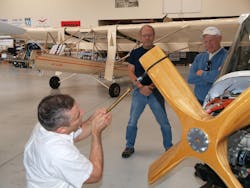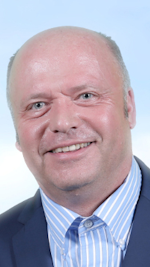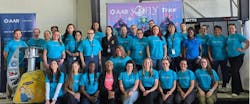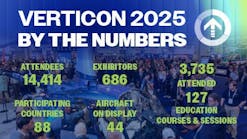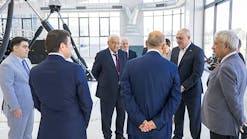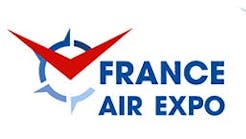Some 41 years ago, in a remote 1975, the engine world of experimental aviation suddenly changed. What happened? Well, ROTAX® engines showed up and quickly became favorite power-plants in a grassroots aviation field. Engines sales grew rapidly and it was soon obvious that an appropriate training for user-owners, pilots, and servicing and maintenance personnel had to follow. Basically, what in the early 1980s was timidly initiated in single countries evolved into a complete world of training; not only in the U.S. but globally.
How it started: The short engines story
The “new era” in the light aviation started in mid 1970s with the serial production of two-stroke engines built for aircraft use by ROTAX®. Sales experienced a strong boost after the introduction of the 80-hp four-stroke ROTAX® 912 engines in 1988 and over the years it has become an industrial standard in experimental and light aviation; later it evolved into a family of engines even in the certified engine world.
In the very beginning after the production start of the first two-stroke engines, ROTAX® 642 in 1975 and the ROTAX® 501/505 in 1978, which was made for motor gliders, it was difficult to predict the strong sales numbers experienced among the grassroots community.
The introduction of the first four-stroke ROTAX® 912/80-hp engine in 1989 was a milestone in small aviation, it has become the bestseller in the light aircraft. This engine – first ROTAX® engine developed specially for aviation – gave birth to a whole line of engines now in production. With the addition of a turbocharger in 1992 the 80-hp ROTAX® 912 became a ROTAX® 914 with 115 hp. Further, from the 80-hp ROTAX® 912 UL (1,211 cm³/73.91 cubic inch) was developed the 100-hp ROTAX® 912 ULS/S (1,352 cm³/82.6 cubic inch) with a bigger bore/higher compression version released in 1999. In 2012 the 912 iS engine was presented – the fuel-injected and deeply modernized version of the carburated 912UL with over 60 percent of new parts compared to its predecessor.
In 2015 at AirVenture/Oshkosh the 135-hp 915 iS was presented. This is now the last evolution stage of the fuel-injected 912 iS engine, that, with an added turbo-charger and intercooler, is capable of full power output up to 15.000 feet. By the time you read this article the 915 iS should have completed its maiden flight.
ROTAX® Engine Maintenance (hi)story
From the first two-stroke engines to the introduction of the successful 912/914 engine range series and the today’s fuel injected 912 iS-915 iS engines, a lot has happened. This technological progress and the certified engine variants have put a different emphasis and requirements on the engine maintenance and training methods.
The first dedicated training in the Americas for ROTAX® aircraft engines started in early 1980s with Engine Tech in Canada and Ron Shettler as the first distributor for the Americas. He contracted Engine Tech - which later became ROTAX® Flying Club (RFC) - offering training also to all new OEMs. A few years later the RFC- ROTAX® Flying Club added the letter „ S, which stands for safety, to cover the accident investigation functions for RFSC-ROTAX® Flying Safety Club. These early programs were based on training developed from the two-stroke, snowmobile programs, coupled with years of experience collected in maintenance training on aircraft engines.
Initially, experimental aircraft owners and kit builders in the U.S. were the target group which wanted and needed more knowledge on ROTAX® aircraft engine products. Over time, more and more certified technicians were interested to get type specific ratings for two- and four-stroke engines not only in the U.S. but worldwide.
ROTAX® certified the 912 under JAR standards (now EASA regulations) in Europe and only few relevant requirements were imposed to complete the FAA’s FAR Part 33 differences. This allowed them to be used in more than experimental aircraft. The reasons for ROTAX® type specific training programs were self-evident from the beginning. Training on certified engines in Part 147 training schools was directed toward the legacy engines and systems.
Given that the existing “standard training” in technical schools was lacking coverage of the technical differences, such as gearbox, electronic ignitions, and dual carburetion, special type specific training had to be developed.
A huge push for special training began when the certified 912A and F engines were first imported with European aircraft to the Americas. The Canadian distributor, Rotech Research Ltd, addressed the customer-related problems caused by lack of qualified maintenance providers and developed training for existing A&P and AME technicians for the Canadian and American aircraft. Their basic programs developed for the four-stroke engines became a best practice base for the current training systems.
LSA on the rise
The introduction of the FAA new rules on Light Sport Aircraft (LSA) in 2004 was another milestone. With LSA aircraft the FAA was concerned that there would be no training materials for this category from industry. A request to all the stakeholders of the LSA category was for type-specific training for the various aircraft types and categories. This gave rise to the need for ROTAX® to have factory-approved programs on engines as they were ahead of the other producers.
Aircraft manufacturer OEMs realized that the engine training would ideally come from the engine manufacturer itself and did not want to develop training on the engines; so it was clear and required that any approvals had to come from the engine supplier manufacturer itself for that requirement. In 2007 ROTAX® released training guidelines to all distributors based on RFSC and Rotech Research Canada suggestions. Therefore BRP-ROTAX® established in 2007 a globally standardized training guideline covering the different scope of work, target audiences, and educational levels that range from familiarization to overhauling of ROTAX® aircraft engines. All technical training courses are offered by ROTAX® authorized distributors and training organizations.
The ASTM Light Sport committee, F37, developed its ASTM F2339 engine standard to which all ROTAX® aircraft product were complaint with. As LSA class has become globally accepted with ROTAX® the dominant player in it, the training programs were embraced by the industry. Furthermore, a growing number of certified aircraft using ROTAX® engines and the shift to higher power engines makes training even more important for the future in both certified and noncertified applications.
